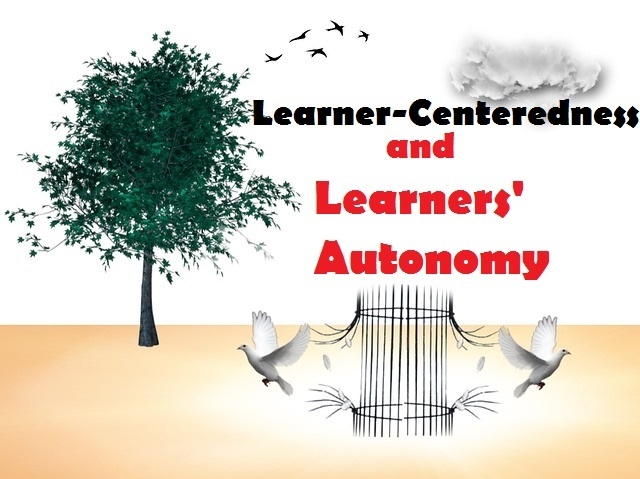The demands placed on students in the fast-paced educational environment of today can frequently result in elevated levels of stress and anxiety, which can negatively impact their entire learning process. It is our responsibility as educators to create a classroom environment that supports resilience and wellbeing.
By guiding students through their emotions and keeping them in the present, mindfulness techniques can improve both their emotional and academic well-being. The goal of this article, “Helping Students Stress Less: Mindfulness Tips for Everyday Teaching,” is to give teachers doable methods for incorporating mindfulness into their regular lesson plans.
Educators may foster a positive learning atmosphere that promotes self-awareness and emotional control by implementing easy strategies like guided meditations, thoughtful journaling, and mindful breathing.
Moreover, these methods not only help children but also give teachers the ability to control their own stress levels, which creates a more positive learning environment. This essay will examine the relationship between mindfulness and education and provide practical advice and insights that may be easily incorporated into any curriculum, ultimately fostering a culture of well-being that improves student engagement and academic performance.
Comprehending Mindfulness in Academic Environments
In educational settings, mindfulness refers to a variety of techniques meant to help pupils become more emotionally stable and aware of the moment. It has become popular as a teaching strategy that improves students’ academic achievement while simultaneously fostering their social and emotional wellbeing.
By incorporating mindfulness into the curriculum, teachers foster an atmosphere that encourages resilience and reflective thinking, which helps kids handle stress better. This is especially important in the fast-paced educational environment of today, when the demands of academic success can exacerbate anxiety and fatigue.
Studies show that mindfulness exercises, such meditation and focused breathing, can greatly increase attention spans, lower anxiety levels, and improve cognitive functioning in general. Through these exercises, students can become more cognizant of their thoughts and emotions, which can improve their ability to make decisions and interact with others. By using mindfulness techniques, educators provide students the skills they need to overcome obstacles in their personal and academic lives and create a compassionate and understanding environment in the classroom.
When students practice mindfulness, they become more focused, resilient, and emotionally regulated during class.
Through cultivating an improved capacity for concentration, mindfulness gives pupils the tools they need to successfully traverse challenging learning contexts. Students who practice mindfulness skills improve their ability to focus and retain information, leading to a greater comprehension of the material being studied. This increased concentration goes beyond academic achievement; it also fosters a sense of presence that lessens outside distractions and enables students to participate more completely in their learning.
Incorporating mindfulness techniques also helps students become more resilient by giving them the tools they need to handle the stresses and emotional swings that come with being a student. Students become more resilient in the face of adversity as they learn to identify and control their emotional reactions.
Students who have more control over their emotions and behaviors are more likely to approach challenges with a problem-solving perspective, which fosters a growth-oriented attitude that is crucial for lifelong learning. This emotional regulation adds to a positive feedback loop.
The Advantages of Mindfulness for Learners
control over their feelings, they are more equipped to tackle academic assignments with assurance and clarity. Their increased self-awareness helps them deal better with stressful situations and cultivates a growth attitude that allows them to see failures as opportunities for growth rather than insurmountable challenges.
As a result, engaging in mindfulness practices can result in a more rewarding educational experience where students feel more empowered to pursue their academic objectives with greater tenacity and motivation.
Apart from promoting emotional control and adaptability, mindfulness also helps students develop stronger interpersonal connections. Through mindful activities, people can develop a deeper feeling of empathy and compassion, which increases their likelihood of having positive social interactions and creating a conducive learning environment in the classroom.
This increased sense of social connectedness fosters a collaborative learning environment where students have a sense of worth and understanding. All things considered, including mindfulness into students’ daily lives enhances both the specific academic journeys of each student and the overall educational experience.
By lowering anxiety and enhancing mental clarity, mindfulness promotes a supportive learning environment.
Incorporating mindfulness practices into school settings is a powerful way to help pupils feel less anxious and have better mental clarity. Through promoting awareness of the present moment, mindfulness provides students with strategies to lessen the intense emotions that are frequently linked to stresses from their studies.
Students who practice mindfulness are able to divert their attention from distractions and bothersome ideas, which frees up brain capacity for more efficient problem-solving and clearer reasoning. This clarity not only helps with academic success but also creates a peaceful atmosphere that encourages deeper interaction with the course content.
Moreover, creating a happy learning environment is greatly aided by the lowering of worry via mindfulness. Lower anxiety levels in students are associated with increased participation in class discussions, intellectual risk-taking, and productive peer collaboration. This change fosters a classroom environment of respect and encouragement in addition to improving individual learning outcomes. The entire educational experience is enhanced when the classroom becomes a caring community, enabling both students and teachers to flourish in a more peaceful and effective environment.
Including Mindfulness in Everyday Instruction
It is easy to include mindfulness practices into regular lessons by using brief, planned exercises that encourage introspection and awareness. For example, starting a lesson with a short guided breathing exercise or a silent moment enables students to gather themselves and make the shift from their outside worlds to a concentrated learning environment. In addition to improving focus, these exercises can help students build a supportive and trusting community as they participate in the practice of mindful awareness as a group.
Incorporating mindfulness into lesson preparations can also help students become more self-aware and regulate their emotions. Through the integration of reflective techniques, such as journaling or group conversations focused on emotions and experiences, educators can foster a deeper understanding of themselves and their peers by encouraging learners to communicate their feelings and responses.
This method helps students build their emotional intelligence while also giving them lifelong tools for stress management and mental health maintenance, which will ultimately help them succeed academically and personally.
Include a few quick mindfulness exercises in your regular classes to encourage participation and wellbeing from your students.
Furthermore, the incorporation of mindfulness exercises in the classroom can improve student engagement by offering a regulated setting for concentration and mental clarity. Students are better able to take in and remember knowledge when they acquire self-grounding techniques like mindful listening or sensory monitoring.
Because they feel more present and connected to the subject matter and their peers, students may participate more actively in conversations and group projects when they are in this elevated state of awareness.
In addition, cultivating a culture of mindfulness in the classroom might enhance kids’ general well-being. Through the normalization of self-care and emotional intelligence practices, educators can lessen the stressors that frequently come with being an academic. This fosters resilience in pupils and helps them approach obstacles with a positive outlook, all while supporting their mental health. In the end, these quick mindfulness exercises can improve academic achievement and personal development by fostering a more welcoming and encouraging learning atmosphere.
Methods for Intentional Breathing Exercises
Students can benefit from practicing mindful breathing techniques as a useful way to improve their emotional control and lessen their anxiety. Methods like diaphragmatic breathing, which emphasizes slow, deep belly breaths and controlled exhalations, assist induce calm and stimulate the parasympathetic nervous system.
Students who go through this procedure frequently experience a deep sense of peace and mental clarity that helps them better handle stress during high-stress events like exams or presentations. Structured breathing exercises can help establish a learning atmosphere where students feel more capable of managing their emotions and improving their concentration.
Furthermore, applying methods like the 4-7-8 method can help to promote awareness even more. This method involves the breather holding their breath for seven counts, inhaling for four counts, then slowly exhaling for eight counts. This rhythmic pattern helps to anchor one’s attention in the here and now while also promoting concentrate on the breath. By teaching these breathing techniques to students, teachers provide them useful tools to manage anxiety and improve their general well-being, which in turn creates a supportive learning environment that promotes learning and personal development.
Instruct pupils in basic breathing exercises to help them focus better and relax.
Not only encourages slower breathing but also helps to calm the mind, which is necessary to achieve increased focus. Students can focus on counting and breathing as a sensory experience to deflect their attention from distracting ideas and develop a present-centered awareness that improves cognitive function. By using these strategies on a regular basis, one can increase their attention span and focus on academic work.
Besides, including these easy breathing techniques into lessons can be a useful tool for educators who want to foster a calm learning environment. Students can reset their mental states by participating in brief, guided breathing sessions before classes start or throughout transitions. This fosters a sense of belonging and shared experiences among students, but it also imparts in them transferable abilities for stress reduction and focus that will help them even outside of the classroom.
Establishing a Concise Learning Environment
Bringing mindfulness practices into the classroom can have a big impact on how emotionally and psychologically healthy students are. This is creating a classroom environment that encourages peace of mind by utilizing natural lighting, adding plants, and minimizing clutter.
Such factors can contribute to the creation of a calming environment both aurally and visually, which lowers students’ anxiety levels. Furthermore, instituting mindfulness-focused practices like scheduled times for introspection or appreciation can strengthen the sense of awareness and community that permeates the classroom.
Furthermore, promoting candid conversations about feelings and experiences can enable students to freely express themselves and foster a supportive and trusting environment. In addition to fostering individual well-being, this activity improves peer relationships by teaching students to relate to one another’s emotions with empathy. Teachers may foster resilience, improve interpersonal skills, and ultimately help all students have a more peaceful and productive learning environment by incorporating mindfulness into the classroom culture.
Create a calm learning environment that promotes awareness and lessens distractions.
Making deliberate changes that put mindfulness and focus first is necessary to create a calm learning atmosphere in the classroom. Incorporating soft color palettes, comfortable seating arrangements, and dedicated quiet places can greatly minimize distractions and generate a sense of peace.
Through the use of sound-absorbing materials, educators can assist students in focusing and participating more completely in mindfulness exercises by lowering background noise. Incorporating natural features, such indoor plants or soothing images, also helps create a quiet environment that helps pupils focus their thoughts and feelings.
Apart from the arrangement of the physical space, the integration of formalized mindfulness exercises into everyday life can augment this calm atmosphere. Students can practice refocusing and increasing awareness through practices including deep breathing exercises, guided meditation, and mindful lesson transitions.
By incorporating these activities into the daily schedule, educators help students develop a general sense of well-being that can have a positive effect on their social and academic performance in addition to reinforcing the value of mindfulness.
Promoting Gratitude Practices and Introspection
Establishing an atmosphere that promotes introspection and thankfulness can greatly improve kids’ emotional fortitude and general welfare. Students might better comprehend their experiences by articulating their thoughts and feelings through regular practices like journaling or gratitude-focused group discussions.
These introspective activities foster empathy and a sense of gratitude for the contributions of others in addition to helping students identify positive elements of their own life. This builds cohesiveness and community within the classroom.
Incorporating acts of gratitude into the curriculum might enhance social dynamics and academic performance. Students who participate in activities that call for them to express gratitude cultivate a more optimistic outlook, which helps reduce stress and anxiety. This change in viewpoint promotes a growth mentality, in which difficulties are seen as chances for learning rather than as barriers to overcome. As a result, students can be more resilient and upbeat in navigating their personal and academic life if they consistently practice gratitude and introspection.
Encourage kids to practice appreciation through introspective exercises to improve their emotional well-being and academic achievement.
Students develop cognitive flexibility as they learn to reframe their experiences through a lens of appreciation, which empowers them to face academic problems with resilience and creativity. This happy emotional state not only makes them more attentive and involved in what they are learning, but it also encourages peer support and cooperation, which makes the classroom a more successful setting.
Cultivating thankfulness might be an effective strategy for managing emotions. Through consistent practice of gratitude journaling, students can cultivate more positive coping strategies for handling personal and academic challenges. In addition to enhancing their general mental health, this emotional agility helps create a more positive learning environment in the classroom where children feel comfortable expressing themselves and taking chances. As a result, putting reflective thankfulness exercises into practice becomes a multipronged strategy for supporting students’ emotional well-being and academic achievement.
In summary, the incorporation of mindfulness techniques into regular teaching can greatly improve the learning environment for both teachers and students. By fostering an atmosphere that prioritizes mental well-being, we not only educate students with vital coping mechanisms but also foster a culture of empathy and resilience within the classroom.
Simple strategies like thoughtful pauses, guided breathing exercises, and reflective journaling can be used to reduce stress and foster a supportive learning environment. Since the development of emotional intelligence and mindfulness abilities is just as important to academic success as traditional learning methods, it is crucial that instructors adopt these approaches. By adhering to these procedures, we can provide students the tools they need to face their academic endeavors with more assurance and less fear.
Author’s Bio: Merry is a seasoned writer and SEO specialist with a passion for crafting compelling narratives that resonate with readers. With a background in Christian marketing, she has spent five years honing her skills as a content writer and SEO expert at a prominent Christian brand.








